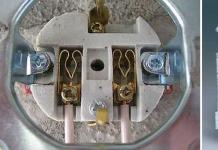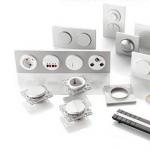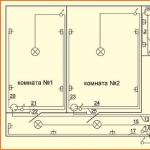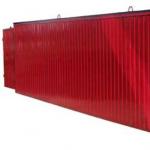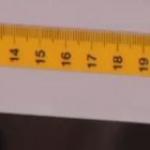Unfortunately, most gardeners know little about this plant, and even more so rarely does anyone cultivate it on their site. But salvia has many advantages, and even two of them are enough - medicinal properties and excellent decoration of the territory - to understand the feasibility of its cultivation. Moreover, the flower is unpretentious and does not require any individual care. Let's talk about, dear reader, when and how to plant salvia seedlings, how to plant them in open ground and take care of the plant.
Salvia is often identified with sage, which is why they are guided by tips for growing the latter, since this plant is well known to many gardeners. It is worth explaining - these flowers are just relatives belonging to a large family of yasnotkovyh, but nothing more.
There are about 900 varieties of salvia, but this does not mean that all of them are suitable for growing in any area. Therefore, inspired by the idea of \u200b\u200bbreeding this flower, you should not immediately go to the store and purchase seed, and even more so some exotic variety. Naturally expensive.
In the drawings placed on the bags of seeds, all salvias look great. But it is not a fact that seedlings grown at home will take root in the open field. When deciding on a particular variety, it is worth consulting with specialists, moreover, local ones.
Seeds can also be prepared independently (at your site, with neighbors, acquaintances), and their shelf life with proper storage is at least 5 years. As soon as the flowers fade and fall off, the planting material will be ready in about 45 - 50 days. By this time, the seeds will fully ripen. All that remains is to collect them, cull them, disinfect them and arrange them in bags.
There are so many recommendations that it is quite difficult to determine the exact timing. The reason is that everyone takes into account the specifics of their area, and rarely does anyone indicate the region of residence. And the climate (and not only specialists in this field notice this) is gradually changing.
What to focus on? The period between the appearance of the first young sprouts from seeds until the flowering of salvia is approximately 4 - 4.5 months. Knowing this, it is easy to determine the date of planting the seed.
What to consider?:
- Is the area characterized by return frosts and when they occur.
- Weather forecasts for the next six months. They are approximate, but they give an initial idea of whether a long spring is expected, whether May will be cold, and so on.
Soil preparation
Composition of the mixture
The soil for salvia should be “light” (that is, accessible for deep penetration of air and moisture) and nutritious. With self-preparation of the soil, such a recipe is most often used - land from the site + peat (1 part each) and coarse sand (0.5).
Soil disinfection
Preparing a container for seedlings
What to use for landing, unprincipled. Flowerpots, store containers, home-made boxes made of moisture-resistant plywood or thin boards are suitable. The common thing is that the height of their sides can be small, since salvia seeds are small and do not fit deep into the soil.
- There should be holes in the bottom. Otherwise, water stagnation and the formation of mold, fungus in the soil, rotting of seeds or salvia sprouts.
- A layer of drainage is a must. The easiest way to buy expanded clay. A bag in a flower shop costs no more than 55 rubles, and it is enough for a couple of overall containers (approximate backfill thickness is 10 cm). As an option - pebbles, sphagnum moss. Some summer residents specially prepare eggshells and also pour it on the bottom. At the same time, a kind of top dressing of the soil from below is obtained.
It remains to load the soil mixture into the container with the expectation that about 2 - 3 mm remain to the upper edges of the sides.
Seed preparation
It is held about 1.5 - 2 days before their landing.
There are a number of activities that should be done. And it doesn’t matter what kind of planting material we are talking about - purchased, taken from friends or collected with your own hands. Exact adherence to the recommendations below (which, by the way, inexperienced flower growers are often neglected) ensures that absolutely all seeds will sprout.
- Rejection. Primary sorting of seeds is just a preliminary selection of planting material. Since it was stored in the winter (and this is several months), it is likely that individual specimens have simply dried up and are unlikely to come to life. It is useless to wait for salvia shoots from them. Checking for suitability for landing is easy. Warm water is poured into a shallow bowl, and seeds are poured. After 1.5 hours, it will become clear that most of them sank to the bottom, and some remained floating. These are "blanks". They merge with water.
- Disinfection. The simplest technique is in a weak (slightly pinkish) manganese solution. Seeds are wrapped in gauze and placed in water for 20 minutes.
- Flushing. It is better to do this under running water, since the main purpose of this event is to wash off the remains (microparticles) of manganese from the seeds.
- Drying. A day and a half, only for moisture to evaporate from the shell. It is not necessary to lay out seeds next to the battery. In the heat, they can simply dry out, and it is unlikely that you will be able to keep track. If the core hardens, then there will definitely not be sprouts. In addition, it is useless to reanimate - the deadlines will pass.
Planting seeds
The soil is slightly compacted. First by hand, gently, and then spilled with water. Its excess is not allowed. Therefore, soil moistening is carried out by the drip method (from a spray bottle).
Placement of salvia seeds. As already noted, they are very small. Therefore, there are two practiced methods, depending on the chosen capacity for seedlings. Actually, you can do whatever is more convenient; anyway, further picking is carried out.
- Spread across the surface. This is more suitable for flowerpots, when the seeds are neatly laid out at a small interval, pointwise.
- Placement in shallow grooves (1 - 2 mm is enough).
The peculiarity of planting salvia is that the seeds are not sprinkled with earth. For good germination, they need more light. This is one reason. The second is that not all shoots will be able to hatch through a thick layer of soil, they are so weak in the first days.
Creating a greenhouse effect. This is a traditional technology applied to any planting material. The container is covered with glass or film.
Exposure to a warm place. As a rule, the choice in the house is small - for heating radiators. Optimally for the germination of salvia - 22 ± 2 ºС. But here you need to fulfill one more condition - to ensure good illumination. Therefore, it is better to install containers on window sills.
seedling care
Depending on the conditions created in the room, the first sprouts will hatch in 2 to 3 weeks. From this time, the actual care of developing bushes begins.
- The cover is removed from the drawers. Salvia seedlings do not need a greenhouse effect.
- The temperature drops to 16 - 18. How to do this, it is decided on the spot - to reinstall the containers, "screw" the valves on the radiators (if it is a private house and the features of the heating system allow) - everyone has their own options. The fact is that excess heat leads to intensive stretching of the shoots. As a result, they will lie down together and are unlikely to develop normally in the future.
- Organized artificial lighting. Considering how much time must pass before the appearance of salvia flowers, planting seeds is carried out even in winter. During this period, daylight hours are short, and for the normal development of seedlings, it needs at least 12 hours.
- Watering. As needed. The criterion for sufficiency is the moisture content of the topsoil. It is necessary to irrigate artificial beds carefully, avoiding moisture on salvia greens. Therefore, at this stage, the cultivation of its seedlings is not practiced - only into the ground, to the base of the stalk, but without pressure, so that the earth does not erode. This is easy to do with a small spoon, onto which water flows from the spout of the kettle (as an option).
- Top dressing. The first time is made a couple of weeks after the appearance of the shoots. Complex formulations that combine organic and mineral fertilizers are best suited for salvia. Dosage instructions are indicated on the drug packaging.
- Pick. It is carried out approximately 6 - 8 weeks after planting the seeds and has 2 goals - to plant the bushes so as not to interfere with each other, and at the same time remove the weakest ones. They are unsuitable for transfer to open ground. If there are few seedlings, then salvia shoots can be placed in separate small flowerpots (plastic cups). Or leave them in the same box, replanting them with an interval of 5 - 7 cm. Here you need to focus on the availability of free space in the house, convenient for further growing seedlings.
In the process of picking, it is necessary to deepen the shoots somewhat. Their roots are already quite developed, so in the top layer it will be difficult for them to keep the bush in the soil. Even if they are all strong in the container, and there is nothing to reject, the transplant will still have to be done.
For those regions where the winter is late, and the timing of the introduction of salvia in the territory is postponed, you may have to do picking again. But this is already being decided depending on how crowded the bushes are in the old place.
It should be noted that in the process of transplanting seedlings, an earthen ball adhering to the roots cannot be removed. Otherwise, they will easily break off, and the escape will be ruined.
- Pinching. It is done so that the bushes branch better, become more voluminous. The point is to trim the upper part of the shoot. As soon as it grows up to 15 cm, it should be pinched. For some varieties, the number of leaves serves as a guideline. Formed 3 - 4, you can start this work.
- hardening. Before planting in the territory, seedlings must be gradually accustomed to natural conditions. As a rule, this is done 2 to 3 weeks before placing salvia in open ground. This is a traditional procedure for all plants whose planting material is grown at home. It is necessary to focus on the street temperature.
At the first stage, the vents are opened for a short time at the place where the boxes with seedlings are installed. The duration of the air baths increases daily. To begin with, 10 - 15 minutes are enough, and so - up to half an hour. When warming, containers are taken out into the open air (balcony, loggia, veranda). The same - with a gradual increase in the duration of stay outside the room. When the average daily temperature is reached, the value of +7 can be left overnight.
As soon as the time comes, the seedlings are placed on the site, in open ground.
- Salvia is developing quite strongly. This must be taken into account when landing on the site.
- To create an original flower arrangement, it is recommended to make full use of some of the characteristic features of salvia. First, combine varieties with different shades. Secondly, to produce multi-row planting (for example, when zoning the territory), placing plants with different heights of adult specimens in the ground. As a result, you can get a living wall, consisting of several tiers.
- If, in the process of development, the seedlings begin to “lie down”, then it is advisable to sprinkle the lower part of the shoots a little with earth. This will help them stay upright.
It turns out that there is nothing particularly difficult in growing salvia. Accuracy, attentiveness and proper care - and she will definitely please with beautiful inflorescences.
Good luck and have a beautiful garden!
Salvia brilliant - a tropical perennial, grown in our latitudes in an annual culture. Like all heat-loving letniki with a long development period (100-120 days pass from sowing to flowering), she spends half her life in a seedling pot and takes her place in the flower beds late: closer to mid-June, or rather, after the 10th, when the threat of night frosts has passed.
Sow in boxes or bowls to a depth of 3-5 mm. The crops are kept in a warm place (+ 25 ° C), moistened with a spray bottle, and so that the soil does not dry out too quickly, you can cover them with paper. Seedlings should appear in about 2 weeks.
Do not forget that we will be planting seedlings in a flower bed quite late - there is a high risk that the plants will not have time to get stronger when they are overtaken by drought and heat. Therefore, it is desirable to prepare planting material with a well-developed root system, which will allow it to quickly take root. For this, two picks are carried out. 
The first - when 2-3 true leaves appear - in a seedling box. The plant dives with an interval of 5 cm, deepening to the cotyledon leaves. The second pick is carried out 3 weeks after the first - in separate pots. For salvia, it is advisable to choose larger pots: not 9 cm in diameter, as usual, but 10-12 cm. Above the 3-4th pair of leaves, the seedlings are pinched to get more lush bushes.
Problems and Solutions
Salvia does not rise for a long time- most likely, you allowed the already swollen seeds to dry out, which is not surprising at the high temperature required for germination. In this case, it is better to reseed it - if there are seedlings, then, most likely, they are weak and unfriendly. In order not to repeat the mistakes, sow, but be careful: in this case, you cannot delay with the first pick, since the roots of the seedlings, fused in the hydrogel, will be difficult to disassemble.
Seedlings can't drop their "helmets"- seed coats. Apparently, the sowing depth turned out to be insufficient or the energy of seed germination is low due to their long or initial low quality. Moisten the seedlings with water from a sprayer and carefully remove the "helmets" by prying them off with a toothpick. Feed with any fertilizer for seedlings, which, in addition to nitrogen, phosphorus and potassium, includes magnesium, and even better, a complex of trace elements, including magnesium.
It doesn't bloom for a long time. Stretched stems and pale leaves indicate a lack of light. Salvia does not like even light shade, many varieties in such conditions delay flowering or do not bloom at all. In the first half of summer, you can still try to transplant the bushes to a more suitable place. If the leaves are greasy, dark green, and there are few or no inflorescences, it means that the plant is “fattening” and an excess of nitrogen in the soil interferes with flowering (salvia is very sensitive to this). Try to correct the situation by feeding it: 50 g of simple superphosphate is poured into 10 liters of hot water, insisted for a day, stirring several times, then filtered and sprayed on the plants.
The salvia variety you like can be preserved by propagating vegetatively. In the summer, take cuttings from it (they take root well even in water) and keep it in the winter on the south window as a houseplant at a temperature of 8-12 ° C. Pinch for better tillering. In March, the plant can be used as a mother liquor.
Bright red salvia flowers decorate flowerbeds and lawns in parks, gardens, courtyards and summer cottages in summer. It is impossible to imagine a flower garden without this beautiful lush plant that blooms for a long time and is completely unpretentious in care. Even a beginner in floriculture can cope with growing salvia in his garden.
In nature, salvia is a perennial plant, but in our gardens it is grown as an annual or biennial. Some varieties in not very cold and snowy winters can easily winter and bloom next year.
Salvia bushes can grow up to a meter in height. They have tetrahedral, ascending or erect stems, on which whole or dissected leaves are oppositely located. The leaves are dark green above and whitish below.
At the ends of the stems, paniculate or spike-shaped inflorescences up to 20 cm long are formed. They consist of flowers that can be of very different colors. In cultivation, salvia is most often grown sparkling or shiny with bright colors. Wild species can range in color from white to bright purple. 
After flowering, fruits consisting of four nuts are formed on the bush. After about a month, salvia seeds ripen in them, which can be harvested and stored. Seeds remain viable for five years.
Varieties and types of salvia - photo
According to biological features and agrotechnical characteristics, the plant is divided into three types.
first group representatives of the American subtropics in our climate are grown as annual plants. They do not tolerate frost and grow well only in moist soils.
Salvia shiny or sparkling - photo 
Compact bushes with a height of 20 to 80 cm are densely covered with petiolate, ovate, entire, opposite leaves. The leaves are light green below and dark green above. Racemose inflorescences from 15 to 25 cm long are collected from large flowers of irregular shape. Each flower has a double perianth and is bright red, pink, purple or white:
- Salvia sparkling with purple buds is distinguished by its velvety and rich color of flowers. It seems that their petals are pubescent.
- Varieties with pink flowers bloom not very long. They have a velvety pink corolla.
- Salvia brilliant white has a creamy corolla and does not bloom very densely.
- Salvia brilliant red is characterized by long flowering and dense inflorescences.
Brilliant salvia varieties popular among gardeners:
- Sahara;
- Salvator;
- Red Arrows;
- Fire star.
The flowering of salvia sparkling begins in June and continues until the frost.
Salvia mealy - photo
The unpretentious plant in care is a pyramidal bush from 60 to 90 cm high. Its oblong-ovate petiolate leaves are pubescent along the veins. Dark blue or white buds bloom on tall inflorescences. On each inflorescence, from 5 to 30 flowers can form. They bloom in mid-August and bloom before the onset of cold weather.
Popular varieties of salvia:

Salvia red - photo 
A medium-sized bush with branching and pubescent straight stems from 50 to 70 cm high. On the stems are ovate, petiolate, finely serrated along the edges. The leaf blades are bare above and pubescent below. Scarlet-red flowers with a long tube form a loose inflorescence, which can reach a length of 15 to 30 cm. Flowering begins in July and continues until frost.
Popular varieties of red salvia:
- Sherry blossom - a bush with pink flowers.
- Lady in Red - the variety is distinguished by bright red flowers and a height of up to 40 cm.
Second group - These are more frost- and drought-resistant types of salvia. They are grown in loose soils rich in mineral fertilizers.
Salvia dandelion 
A herbaceous plant with not very branching straight stems has a basal rosette of leaves. Irregularly serrate, pinnately dissected leaf blades are pubescent below and bare above. Pale pink flowers have a greenish throat, covered with purple spots.
Whorled salvia - photo 
A bush with pubescent ascending or branching stems has a height of up to 40 cm, unusually shaped pubescent, long-leaved leaves and flowers with a lilac-blue corolla. Each plant forms a dense whorl, on which from 5 to 30 buds can form.
Salvia variegated or green - photo 
The wild plant has a decorative appearance - salvia horminum. This is a bush up to 60 cm high with brightly colored flowers of pink or juicy purple. On downy branching, straight stems, pubescent, oblong-elliptical, petiolate leaves are formed. The inflorescence up to 30 cm long consists of about six false mutons, the corollas of which are pink.
Third group- this is X Growing well in temperate climates, cold-resistant salvia species can grow in the shade, are unpretentious in care and require shelter only if a snowless winter is expected. They bloom profusely in the second year after planting in open ground.
Salvia lush - photo 
A bush with spike-shaped blue-violet inflorescences will grow up to 60 cm in height. Popular varieties:
- Rose Queen is a dwarf plant with pink flowers.
- Blue Queen is a dwarf variety with lavender-blue buds.
- Snow Hill - a bush with white flowers.
Salvia sticky - photo
A tall plant up to 90 cm high is distinguished by numerous pubescent stems with yellowish-green serrated ovate-triangular leaves. At the end of summer, light yellow flowers bloom on the bush. Flowering continues until the end of autumn.
Salvia oak or forest - photo 
A bush with large purple bracts reaches a length of 60 cm. Its sessile upper leaves are smaller in size than the lower petiolate ones. Inflorescences consisting of false whorls have two lateral branches. Each whorl consists of approximately six florets with a violet-blue corolla. The buds open at the end of June and bloom before the onset of cold weather. Known varieties:
- Amethyst is a plant with pink-purple flowers.
- Plumosa is a bush with dark lavender buds.
- Mainacht - the variety is distinguished by a purple-blue color of flowers.
Salvia officinalis or sage - photo 
The plant can be attributed to the first group of salvia species, since in nature sage grows in the regions of Asia Minor and the Mediterranean. For more than one thousand years, this medicinal plant has been familiar to people and is widely used in cooking, perfumery and medicine.
Sage differs in height up to 50 cm, purple flowers on vertical inflorescences and silvery oblong leaves. Blooms in mid-summer.
In our gardens, sage is grown as an annual through seedlings.
Growing salvia from seeds
Annual and biennial plants are propagated by seeds, and perennial salvia can be additionally propagated by cuttings and dividing the bush.
When to plant salvia for seedlings in 2019?
When to sow salvia? Perennial crops are produced in the ground in spring or autumn, and salvia seeds are planted for seedlings from mid-February to early March. Seedlings grow sparkling or shiny salvia.
Favorable days according to the lunar calendar for sowing salvia in 2019:
- February: 7, 11, 13, 16 are the best days, but you can start planting 8, 9, 10, 15, 17 and 18. It is not recommended to plant from 3 to 5, 19 and 20.
- March: 10th, 12th, 15th. You can not sow salvia 5, 6, 21, 31.
- April: from 7 to 18, but the best days are April 7, 11 and 18. Unfavorable days for sowing: April 5 and 19.
- May: crops - 9, 10, 15, 17. Unfavorable days: May 5 and 19. You can plant salvia seedlings according to the lunar calendar: May 7, 8, 10, 14, 15, 18, 18.
- June: the best days for planting seedlings are the 4th, 5th, 6th, 12th, 13th. It is not recommended to plant on June 3, 11, 17 and 25.
Salvia seedlings are grown as follows:
- Seedling containers are prepared and filled with loose, moist soil.
- Seeds are planted to a depth of about 2 mm, and plantings are sprayed with warm water from a spray bottle.
- The containers are covered with plastic wrap on top, as a result of which a greenhouse is formed in which the soil will not dry out.
- Crops should be kept warm at a temperature of about +25 degrees. When caring for them, the film is removed every day to ventilate the soil and check its moisture content. The drying soil is moistened with a spray bottle.
seedling care
After about two to four weeks, seedlings will appear. In order for the seedlings to form a strong root system, the bushes dive twice before planting in open ground.
The first pick is made after the appearance of two true leaves on the seedlings. They are seated from each other at a distance of 5 cm, using a larger seedling container for this.
Seedlings are dived for the second time three weeks after the first picking procedure. In this case, each bush will need an individual pot with a diameter of 10-12 cm. 
In order for the plants to bush better, when the third or fourth true leaf appears, pinch their tops.
In the middle of spring at night, seedlings are exposed to a closed loggia with an air temperature of up to +10 degrees. Thus, the plants are hardened and prepared for planting in open ground. If there is no loggia, hardening can be carried out by ventilating the room or taking seedlings outside in warm weather during the day.
A flower bed is prepared for the plant, located in a well-lit area, otherwise their flowering will be poor. Only salvia sticky can grow in partial shade.
When to plant salvia in open ground?
Seedlings are planted in early June, when the temperature is above zero even at night. Before planting, prepare holes with a distance  25-30 cm apart from each other. The soil should be permeable, sandy and light, rich in humus and lime.
25-30 cm apart from each other. The soil should be permeable, sandy and light, rich in humus and lime.
The bottom of the hole is covered with humus, after which a bush is placed on it together with a clod of earth. The roots are covered with soil and watered.
How to grow salvia?
The plant is unpretentious and does not require special care throughout the season. But you need to know some of the nuances of its cultivation:

Care after flowering
Salvia blooms from early summer until frost. Each species has its own flowering lines. If the forest salvia is cut and fed as soon as it fades, then at the end of summer you can wait for a new formation of buds.
Perennial salvias are pruned after flowering, and the soil around them is covered with mulch. Be sure to cover the growing points with garden compost. Young plants are additionally covered with dry foliage or spruce branches.
Diseases and pests
Salvia is rarely affected by diseases, and pests, mites, aphids, thrips or whiteflies can settle on it. Snails and slugs like to eat delicate foliage of the plant.
Insect pests are destroyed by spraying the bushes with special insecticidal preparations. Slugs or snails are harvested by hand. 
The bright flowers of salvia go well with ornamental foliage and flowering plants. They can be used to create multi-tiered flower beds and flower beds with complex floral patterns. The unpretentiousness of flowers allows them to be planted in parks and city flower beds. Salvia can be planted in a garden container or box and used to decorate a balcony. In the garden, it can be grown almost anywhere, the main thing is to show imagination.
Salvia (lat. Salvia) or sage is a representative of the Lamiaceae (Lyasnotkovye) family. To avoid confusion, the spice and medicinal plant are called sage, and ornamental crops of this genus are called salvia. According to external signs, salvia is the same sage. In the natural environment, salvia is found in the temperate and tropical climatic zone of all corners of the world, except for Australia, which is remote by water bodies. Salvia is derived from the Latin word "salvus", meaning "to be healthy", because indeed some types of plants have medicinal properties.
Rinsing with a decoction of sage will quickly cure the flux. Salvia officinalis has been familiar to everyone since the time of the Roman Empire, while salvia came to Europe in the 18th century. Salvia divinorum - narcotic sage or predictor sage - in the classification is separate from other species. In this article, we will only talk about salvia grown for decorative purposes.
Salvia is a rhizomatous plant with erect, tetrahedral stems reaching a height of up to 1.2 m. The plant is perennial, but in our latitudes it is grown as an annual or biennial, because it freezes during snowless or snowless winters. The leaves are oblong, entire, less often pinnately dissected, attached on long petioles, arranged oppositely.
The surface of the foliage of the plate is painted dark green, and the underside is whitish. A complex spike-shaped or paniculate inflorescence 15-20 cm long appears at the top of the stem. The flowers are small, the bracts are painted white, pink, lilac or purple. At the end of flowering, a fruit is tied, consisting of 4 nuts. Seeds ripen in a month and retain long-term germination (about 5 years after harvest).
When and how to plant salvia seedlings
Annual and biennial salvia are propagated by seeds, perennials can also be propagated vegetatively - by cuttings and dividing the bush.
Sowing seeds in open ground is done in early spring and before winter, but the seeds may not sprout, or young plants die from the cold.

Safer to grow. Moreover, the type of Salvia is sparkling, it is also brilliant (Salvia splendens), it is grown only in seedlings.
- Sowing for seedlings is carried out from mid-February to early March.
- Take a wide container, place a drainage layer of expanded clay on the bottom, fill the rest of the space with a substrate for growing seedlings.
- Moisten the soil, plant the seeds to a depth of no more than 2-3 mm.
- Cover with transparent film and keep the air temperature at 25º C.
- Put in a bright place without direct sunlight, water through the pan, ventilate the crops.
- After a couple of weeks or a month, shoots will appear. Remove cover.
- For seedlings, it is important to organize a 12-hour light day - use artificial lighting.
- With the appearance of 2 true leaves, dive the plants and transplant into a new box, keeping a distance of about 5 cm between them. You need to deepen to the cotyledon leaves.
- 3 weeks after picking, it should be transplanted into separate pots with a diameter of 10-12 cm.
- Pinch seedlings above 3-4 leaves to encourage branching.
- Starting in April, harden off plants - lower the night temperature to + 10º C.
Propagation of salvia by cuttings

As part of the shoot 5-10 cm long, make a cut slightly below the node, using a scalpel or a sharp knife. Rooting occurs in 2 stages: first in water, then in soil. Take a transparent container (it is more convenient to view the water level and the presence of roots), pour a layer of water about 5 cm and place the cutting there, add water as it evaporates. Expect roots to form in 2-3 weeks.
With the achievement of a root length of 1-2 cm, it is necessary to land in a small pot with light soil. Keep the air temperature at 20° C. Water regularly, spray occasionally. A sufficiently strong plant is beginning to be accustomed to outdoor conditions - put it at an open window, take it outside for a while, but put it in a shady place. 3-4 weeks after growing in the ground, apply mineral fertilizers. Then you can plant in a permanent place in the garden.
Planting salvia in open ground

Salvia seedlings are ready for planting in the ground photo
When the threat of night frost has completely passed (late May-early June), plant salvia in the garden. Suitable light permeable sandy soil, rich in lime and humus. The plant is photophilous (the exception is salvia sticky, capable of growing in partial shade), choose a sunny site. At a distance of 25-30 cm, dig planting holes, add a handful of humus and transfer the salvia along with an earthen clod. Tamp a little, pour.
Salvia care outdoors
Caring for salvia is not complicated and consists in carrying out standard actions: watering, weeding, loosening the soil, fertilizing.
Watering
The plant does not tolerate stagnant moisture at the roots. It is necessary to produce when the soil dries out properly after the previous one. It is better to water in the evening, add a little water.
Loosen the soil as needed, remove weeds.
top dressing
It will be necessary to apply a complex of mineral fertilizers twice: immediately after planting and with the beginning of the formation of buds.
Because the stems are flexible, plants taller than 1m will need support.
When does salvia bloom?
Flowering of all species begins in June, and may end with the onset of autumn frosts. Some species are able to bloom twice. For example, forest salvia: after the first flowering, it must be completely cut off, fertilized, watered moderately, then the plant will release new shoots and give re-flowering.
pruning
Perennial salvia needs, which prevents denudation and stretching of shoots, stimulates tillering. Before the onset of winter, perennial salvias need to cut off the old lignified shoots almost completely, leaving a few centimeters with growth buds and young greenery. Mulch the soil with compost, additionally cover young salvia with dry foliage, spruce branches.
Salvia pests and diseases
Very rarely, salvia can suffer from fungal infections. Fungicide treatment will help.
The delicate fragrant leaves attract thrips, whiteflies, aphids, mites, slugs and snails.
Snails and slugs can be removed mechanically: collected by hand, lured into traps.
To get rid of any pests, treat with an appropriate insecticide.
Types and varieties of salvia
Taking into account agrotechnical characteristics and biological characteristics, salvia species are divided into 3 groups.
Group 1: thermophilic species(do not tolerate even the slightest frost, so they are grown with us as an annual), originally from the subtropics of America. Let's take a look at this group.
Salvia sparkling or brilliant Salvia splendens

Salvia brilliant photo of flowers grade Salvia splendens ‘Faye Chapel’
Compact, densely leafy shrub 20-80 cm high. Leaves ovoid, entire, petiolate, arranged oppositely. The color of the leaf plate is dark green above and lighter below. The flowers are large, irregularly shaped, have a double perianth, gather 2-6 pieces in a racemose inflorescence 14-25 cm long. The color of the corolla and calyx is bright red.
Varieties of salvia sparkling:
White - the inflorescence is not very dense, against the background of the white color of the corolla, the calyx seems creamy.
Pink - has a shorter inflorescence. The color of the corolla and calyx is pink, the corolla has a velvety texture.
Violet - the catchiness of the bright purple color of the flowers enhances the dense pubescence.
The most popular sparkling salvia are: Salvator, Red Arrows, Sahara, Fire Star.
Salvia bright red Salvia coccinea

Salvia bright red Salvia coccinea cultivar Lady in red Lady in Red photo
Reaches a height of 50-70 cm. Straight stems branch well, have dense pubescence. The leaves are ovate with finely serrated edges, attached on petioles, the surface of the leaf is smooth, the underside is pubescent. The flowers have a fiery red color, gather in a loose whorled inflorescence 15-30 cm long.
Varieties:
- Lady in Red - reaches a height of 40 cm, the flowers are the same.
- Sherry blossom - pink flowers, early flowering.
Salvia mealy Salvia farinacea

Pyramidal shrub 60-90 cm high. Non-capricious, long-flowering. The leaves are oblong-ovate, entire, attached to petioles, pubescent along the veins. The color of the corolla is dark blue, rarely white. A tall peduncle 15-20 cm long consists of 5-30 flowers about 2 cm long.
Type varieties:
- Anshuld - the color of the flowers is white-silver.
- Strata - has blue flowers.
- Victoria - blooms magnificently with dark blue flowers.
Group 2: more cold tolerant and drought tolerant species Mediterranean origin.
Salvia green or variegated Salvia viridis var. Horminum

Only the Horminum variety (var. Horminum) is decorative - it is an annual plant 40-60 cm high. It has numerous well-branched stems, they are spicy, covered with glandular pubescence. The leaves are oblong-elliptical in shape, attached to the petioles, also pubescent. Simple inflorescences consist of false whorls with 4-6 pink flowers, bracts are more remarkable - bright pink or juicy purple.
Varieties:
- White swan - white flowers with pink or purple bracts.
- Oxford Blue - the color of the bracts is blue-violet.
- Pink Sandy - pink bracts.
Whorled Salvia Salvia verticillata

Salvia whorled grade Salvia verticillata ‘Purple Rain’ photo
With straight stems, reaches a height of 35-40 cm. The leaves are long-leaved. Stems and leaves densely pubescent. Dense whorled inflorescences consist of 5-30 lilac-blue flowers. The Purple Rain variety has purple calyxes and dark purple corollas.

Salvia dandelion Salvia taraxacifolia photo
Herbaceous plant with straight, poorly branched stems. All parts of this type of salvia exude a pleasant spicy aroma. Cirrus-dissected leaves, irregularly dissected along the edges, are collected in basal rosettes. The surface of the leaf is bare, there is pubescence below. The inflorescence 28 cm long consists of whorls with several flowers. The color of the corolla is pale pink, the pharynx is greenish with purple dots.
Salvia Jurisicha Salvia jurisicii is a species belonging to group 2, but is not of interest to gardeners.
Group 3: cold-resistant species, require shelter only in snowless winters. They are undemanding in care, can grow in the shade, flowering begins from the second year of life.
Salvia oak or forest Salvia nemorosa, Salvia sylvestris

The stems are branched, pubescent, reach a height of about 60 cm. The upper leaves are sessile, smaller than the lower ones, petiolate. Whorled inflorescence has several pairs of lateral branches. Each whorl consists of 2-6 small flowers with a corolla of a blue-violet hue and a purple bract.
Type varieties:

Mainacht - purple-blue color of flowering;
Plumosa - dark lavender flowers;
Amethyst is a pink-purple color of flowers.
Salvia sticky or glandular sage Salvia glutinosa

Most often grown in our latitudes. Plant up to 90 cm high, has numerous straight stems with glandular pubescence. The leaves are large, ovate-triangular in shape with serrated edges, painted in a yellow-green hue, attached on long petioles. Inflorescences loose, whorled, consist of light yellow flowers.
Salvia lush Salvia x superba

Salvia lush Salvia x superba grade ‘Merleau Blue’ photo
Reaches a height of 60 cm, spike-shaped inflorescences, blue-violet flowers.
Varieties:
- Snow Hill - snow-white flowers;
- Blue Queen - dwarf variety with lavender-blue flowers;
- Rose Queen is a low plant with pink flowers.
Species of meadow salvia (Salvia pratensis) and Ethiopian salvia (Salvia aethiopis) also belong to the third group.
